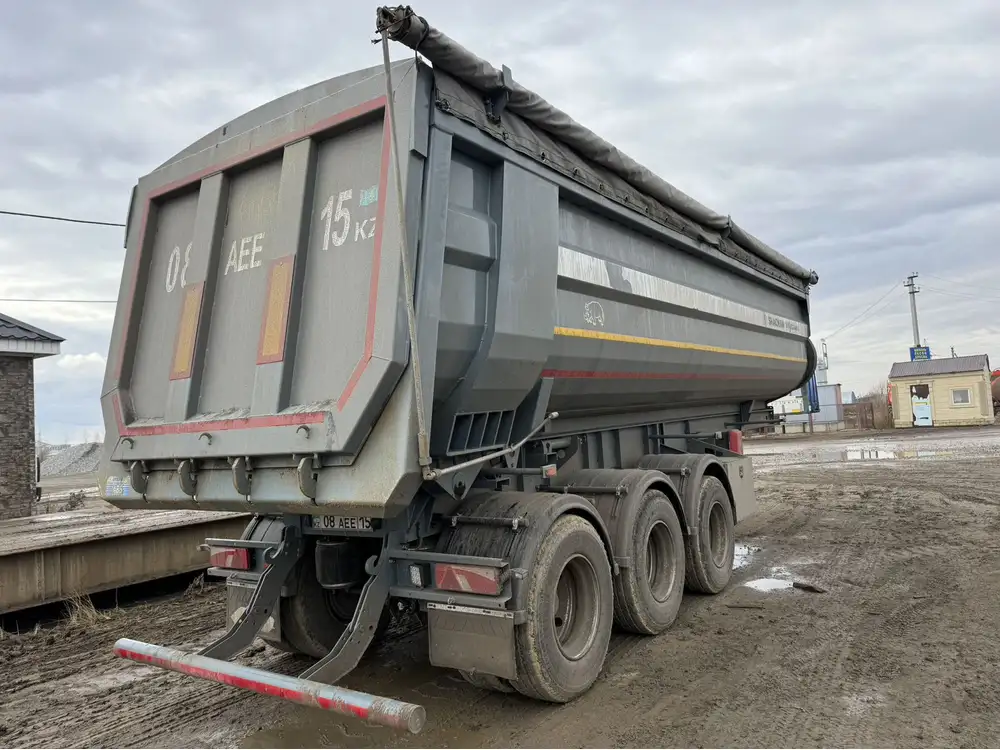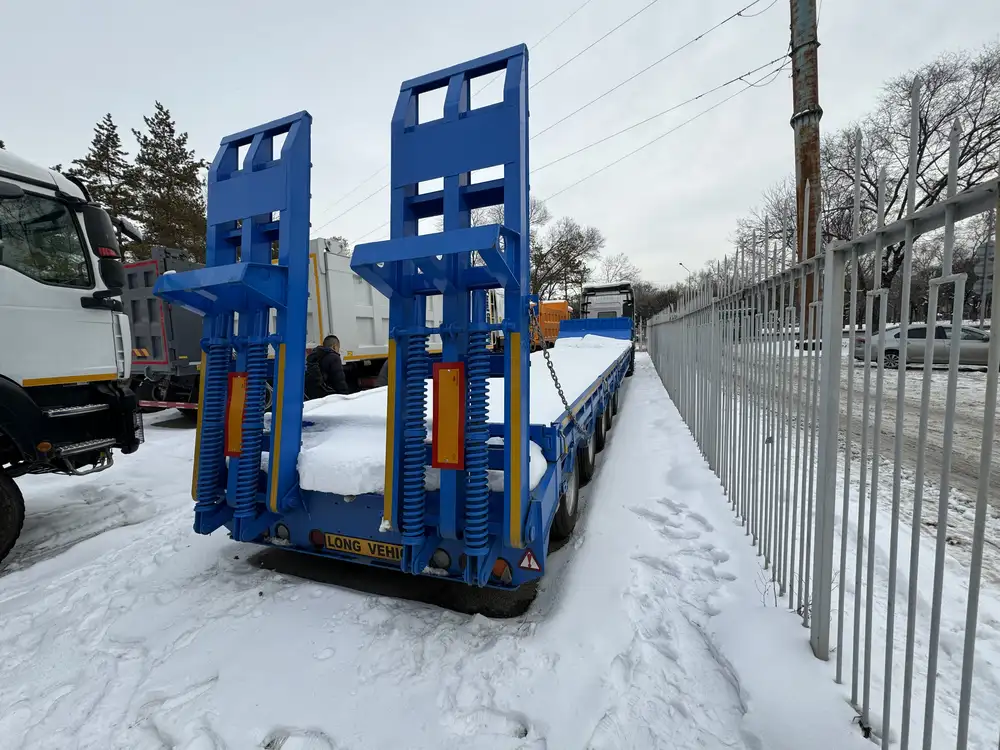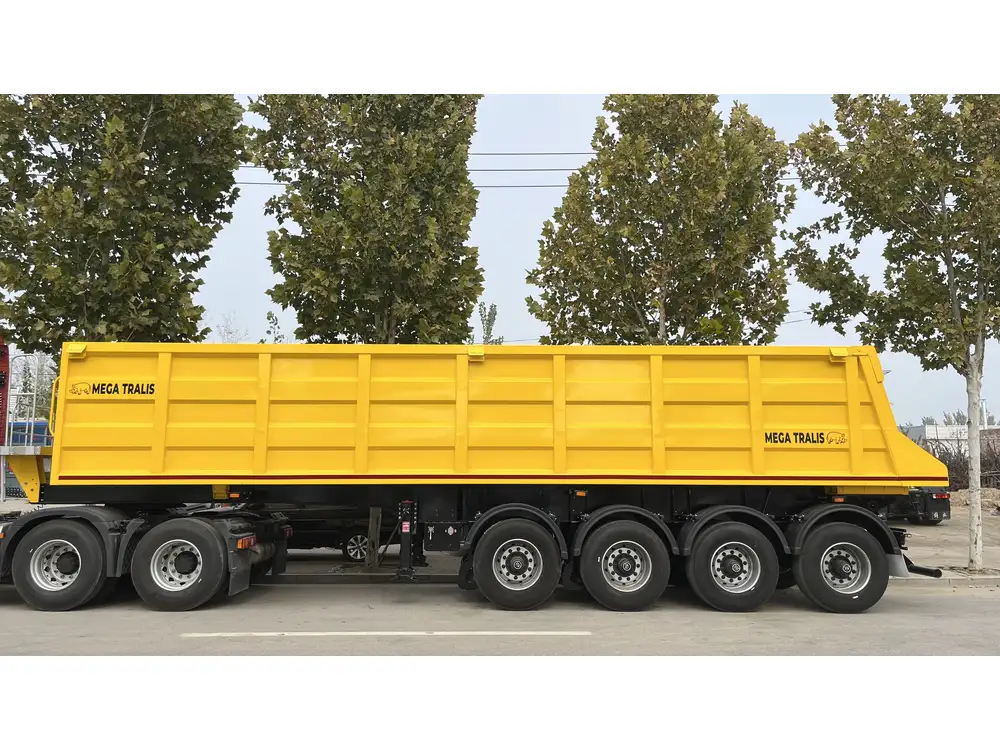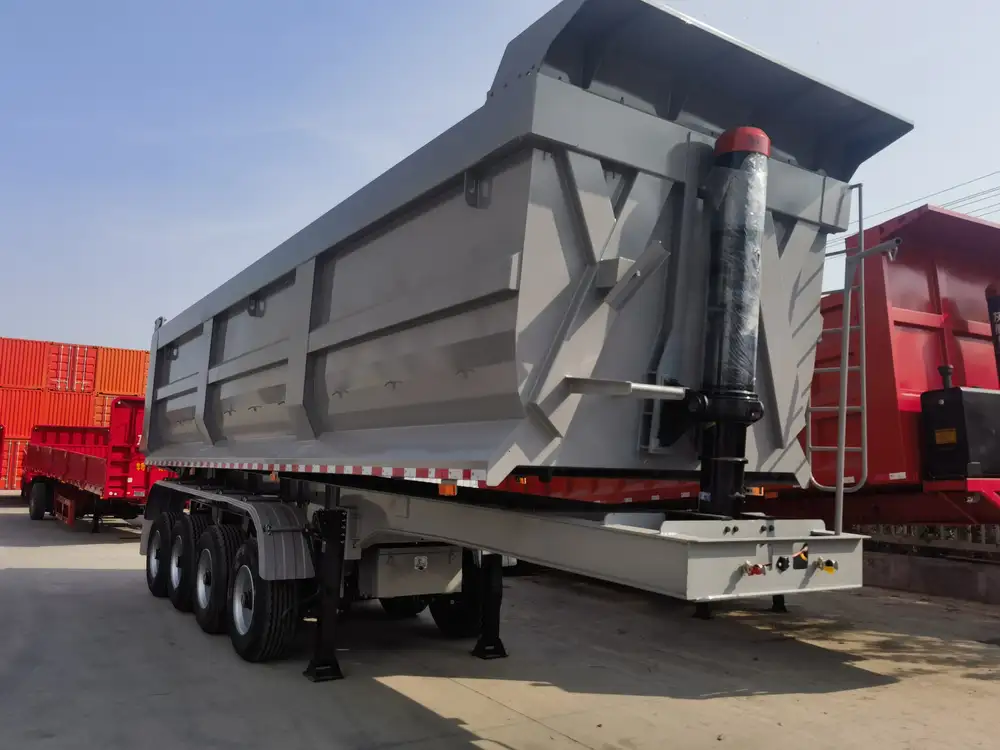Introduction to Semi-Trailer Dimensions
In the expansive world of logistics and transportation, understanding the dimensions of vehicles, especially semi-trailers, is paramount. Semi-trailers, widely recognized for their role in freight transport, come in various shapes, sizes, and configurations. One of the critical dimensions that often comes into question is the height of a semi-trailer. This article delves into the intricacies surrounding this measurement, examining industry standards, regulatory requirements, and considerations that influence height.
What Defines the Height of a Semi-Trailer?

Standard Heights and Regulations
The height of a semi-trailer generally refers to the vertical measurement from the ground to the uppermost point of the trailer body. The Federal Highway Administration (FHWA) in the United States stipulates a maximum height limit of 13 feet 6 inches (approximately 4.15 meters) for semi-trailers operating on interstate highways. This measurement ensures compliance with both federal and state regulations, designed to promote road safety and facilitate optimal clearance for bridges and overhead structures.
| Type of Trailer | Standard Height (in feet) |
|---|---|
| Flatbed Semi-Trailer | 13.5 – 14 |
| Dry Van Semi-Trailer | 13.5 – 14 |
| Refrigerated Semi-Trailer | 13.6 – 14 |
| Tanker Semi-Trailer | 13.5 – 14 |
Height Variation Among Different Types of Trailers
The height may vary depending on the trailer type and its intended use. For instance:
- Flatbed Trailers: These generally adhere to the standard maximum height, with some variations based on load specifications.
- Dry Van Trailers: Standard heights are usually around 13.5 to 14 feet.
- Refrigerated Trailers: These often reach up to 13.6 feet.
Understanding the height specifications of each type is essential for compliance and safe operations.
Factors Influencing Semi-Trailer Height

1. Load Type
The nature of the cargo can significantly influence the height of the semi-trailer. Certain types of freight, such as construction materials that require specialized handling, may necessitate adjustments in trailer height.
2. Load Distribution and Securing Techniques
Improper load distribution can worsen the risk of accidents. Therefore, ensuring a evenly distributed weight across the trailer will play a role in maintaining an optimal height during transit. Practices like using load locks or straps can also affect the overall height.
3. Terrain and Route Consistency
When planning transport routes, companies often consider height restrictions imposed by bridges, tunnels, and overpasses. Semi-trailer heights may need to be adjusted or modified based on expected terrain. Familiarity with local infrastructure can prevent costly delays and safety risks.

4. Manufacturer Specifications
Each manufacturer provides specifications unique to their semi-trailer designs. Understanding these details ensures compatibility with fleet requirements and adherence to safety regulations.
Measuring the Height of a Semi-Trailer
Correct Measurement Techniques
Measuring the height of a semi-trailer may seem straightforward, but ensuring accuracy is crucial:
- Use a Measuring Tape: This should be used to measure from flat ground to the highest point of the trailer.
- Consider the Load Height: Ensure that the measurement accounts for the load when the trailer is fully loaded.

Recommended Tools for Precise Measurements
| Tool | Purpose |
|---|---|
| Measuring Tape | For basic height measurements. |
| Laser Level | For accurate elevation checks. |
| Water Level | Useful for terrain considerations. |
Importance of Knowing the Height of a Semi-Trailer
Legal Compliance and Safety
Understanding and adhering to height regulations helps avoid legal entanglements and ensures the safety of drivers and cargo. Non-compliance can lead to fines, and increased insurance premiums, and significantly heighten the risk of accidents.

Operational Efficiency
Optimal trailer height contributes to overall operational efficiency. Proper height management can reduce wear and tear on vehicles and maintain the integrity of cargo, leading to cost savings in the long term.
Conclusion: Navigating the Semi-Trailer Height Landscape
Knowing the height of a semi-trailer is crucial for manufacturers, fleet operators, and drivers alike. Beyond the basic measurements, understanding why these heights vary and what impacts them can significantly enhance operational efficiency and regulatory compliance. As we engage in the ever-evolving transport industry, these insights enable better decision-making and optimized logistics, ensuring safety on the roads and efficiency within the supply chain.
Future Trends in Semi-Trailer Design Height

Innovations in Design and Materials
With advancements in materials and engineering, future semi-trailer designs may undergo changes that can affect their height. Lightweight, durable materials could allow for modifications in height while maintaining structural integrity.
Height Adjustments and Adaptive Technologies
Anticipating changes in the freight industry, manufacturers are exploring adjustable height technologies that can adapt to different cargo types and road conditions. These innovations may revolutionize height management in the trucking industry.
Regulatory Framework Evolution
As urban infrastructure evolves and truck traffic patterns change, regulatory bodies might adapt height limits. Staying abreast of these changes will be critical for manufacturers, shippers, and transport companies to comply with new norms.

FAQs About Semi-Trailer Heights
Q1: How can I ensure my semi-trailer complies with height regulations?
A1: Always verify the latest federal and state regulations before transporting. Use proper measuring techniques and check the load before travel.
Q2: What are the consequences of exceeding height limits?
A2: Exceeding height limits can lead to fines, accidents, and damage to infrastructure, resulting in extended delays and liability issues.
Q3: Are there specialized trailers for taller loads?
A3: Yes, for industries requiring taller loads, specialized trailers with higher design limits may be available, but additional regulations may apply.
Understanding the height parameters of semi-trailers opens up a wider discussion surrounding logistics, safety, and technological advancements. This knowledge is imperative for organizations looking to optimize their transportation efficiency while adhering to compliance. Stay educated, stay safe, and navigate these dimensions with confidence.



